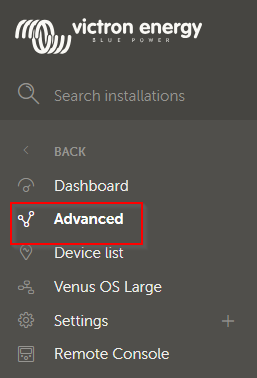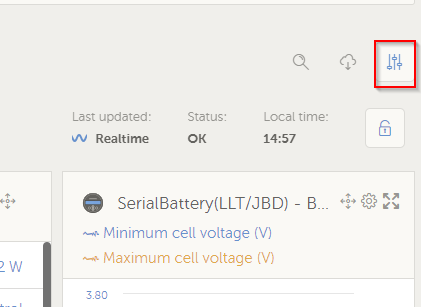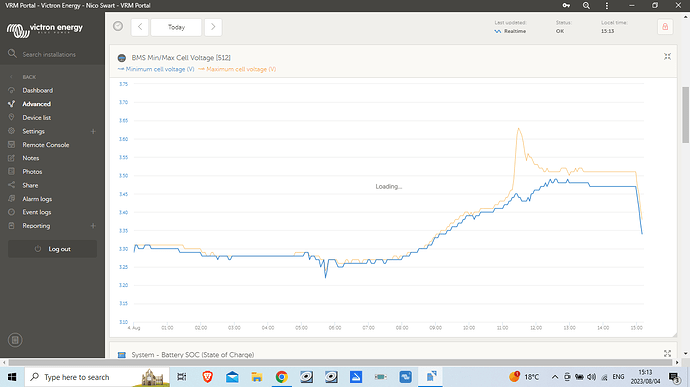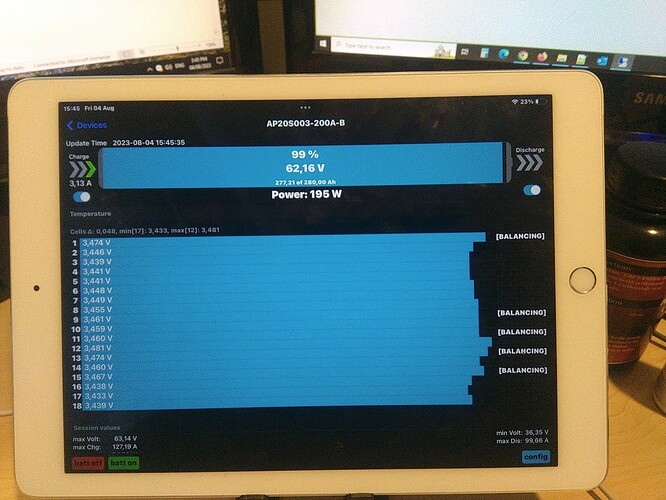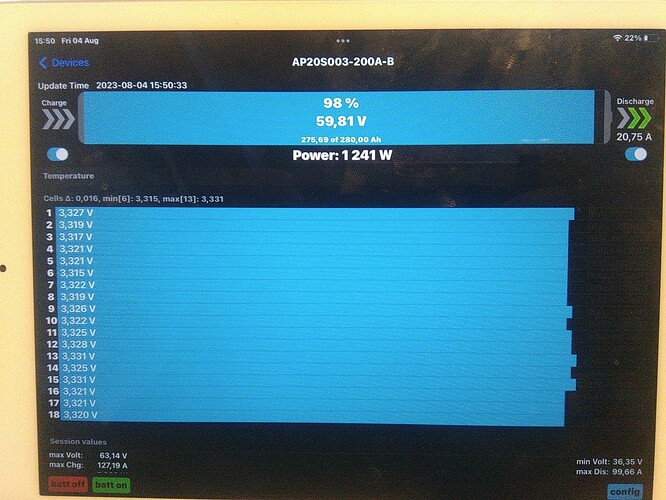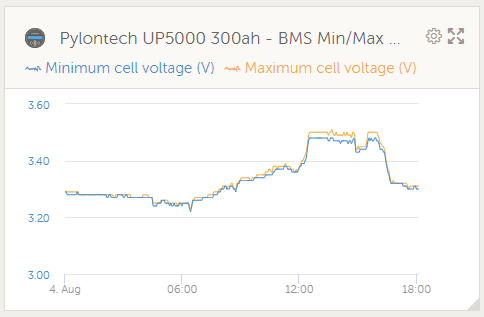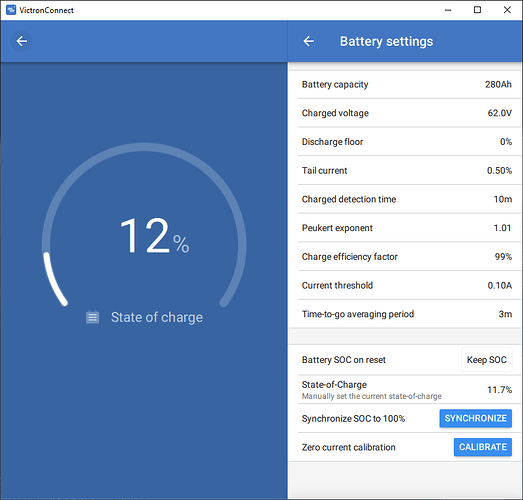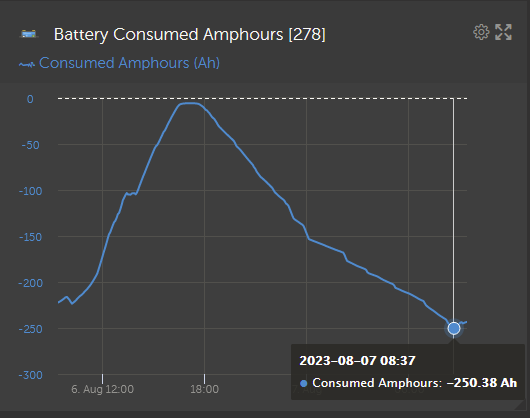I agree 100% with @Louisvdw
I agree 100% with @plonkster
Where we differ is because I’m an end-user that knows little enough about software to make me very VERY dangerous, that in my learning curve on a DIY bank (read, I don’t have warranty concerns), I am seeing things that make me believe that we do not know it all yet.
We can explain to each other WHY it happens … justify it … and less support (I agree btw) … but like we learned about lead acid banks over decades, lithium SOFTWARE and HARDWARE is still NEW.
In my view, as time progresses, the lithium-battery SOFTWARE and HARDWARE will become more accurate, just like Victron figured out over time how to get a BMV as accurate as damn for lead acids.
Andy’s channel, Neey listened to his and his follower’s feedback … they upgraded the hardware and software.
My posts above, the screenshots, were to show those who want to ponder more on it, see for themselves what I see, that maybe like say developers ![]() , can ponder on how to make the SOFTWARE better … the shunt in BMSs lacking somewhat. So yeah, there is that.
, can ponder on how to make the SOFTWARE better … the shunt in BMSs lacking somewhat. So yeah, there is that.
Customer feedback some may call it.
Further:
Used to say to people with lead acids, people who pay 10s of thousands for a lead acid battery, who then refuses to buy an “expensive” battery monitor, one that will last them for YEARS, longer than their lead-acid banks will ever last, that if that device can save them one early bank replacement, that the BMV would have been “free”.
Now we have lithiums, even more expensive, and we have BMSs in them (some with shunts), but the SOFTWARE is “new”. Then we have new models and upgrades of that same brand where there are massive improvements on the previous model’s HARDWARE/SOFTWARE, sometimes we have older model BMSs that were “cutting edge” at one time which is crap today. I have one. My first one.
Then we have LS in SA … the batts cycle more than once a day …
I won’t trust my massive investment in batteries to just a BMS. They have bugs.
My take:
- BMS does what BMS does, cuts out the bank with too low volts, too high volts. Lithium has to have that.
- Keep the cells in line as far as possible, the balancing, but we tell each other it takes weeks.
- Balancers should be a separate big mother of a balancer for WHEN it is needed like when the bank gets old.
- I will NOT trust the BMS in the same way, on Ah calcs, as I will trust a BMV … till the hardware is similar. And I have a big shunt in the BMS, it cannot read as low as the BMV, EXACTLY why I got drama in the past … and it is passive … but it is a BIG amp BMS … so there is that. Tough to make big amp BMS to split the charge/discharge. I get that too.
This chat about BMV or not reminds me of Will Prowst. On another big forum there was this one video used about why a BMV is not a good buy and why not to get one. He “dissed it something fierce”. So expensive!
So I had to reply … see, ±1 year after that first video, Will did another video on the same BMV and he could not stop extolling its virtues cause he finally dug deeper into what that “expensive” device can add to his life … (hy was amper liries.) … and that was on a lithium bank in his electric quadbike. ![]()
There you have it … I’m using a BMV (and I am NOT saying go and buy new) cause I had it. I will use the BMV until the day I can find a BMS that has the SOFTWARE and HARDWARE to match what a BMV has shown me what is possible … with firmware upgrades thrown in. Software is upgraded all the time.
Ps. BMV only needs calibration every few months. Perfectly normal.
Pss. Some darker view … I’m gonna say this here … 10-year warranties, fine. So, the cheapest part of that entire battery is a BMS. Fine. So that BMS is an old model, it has shortcomings and bugs … new models have that fixed. So how does that impact on the older BMS, the 10-year warranty?
We won’t know … till we get there.
BMV, in my case, will give me recorded data …
